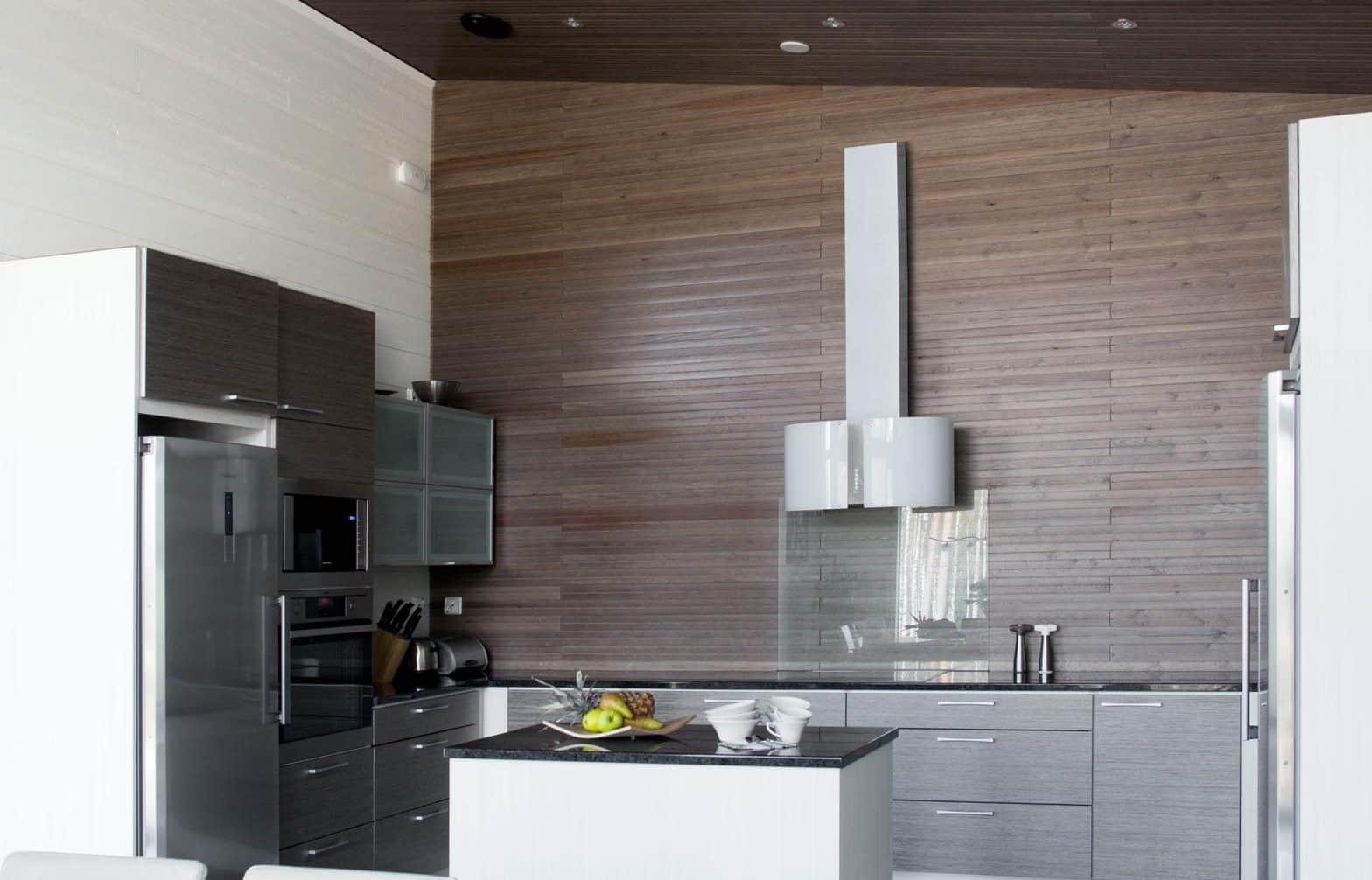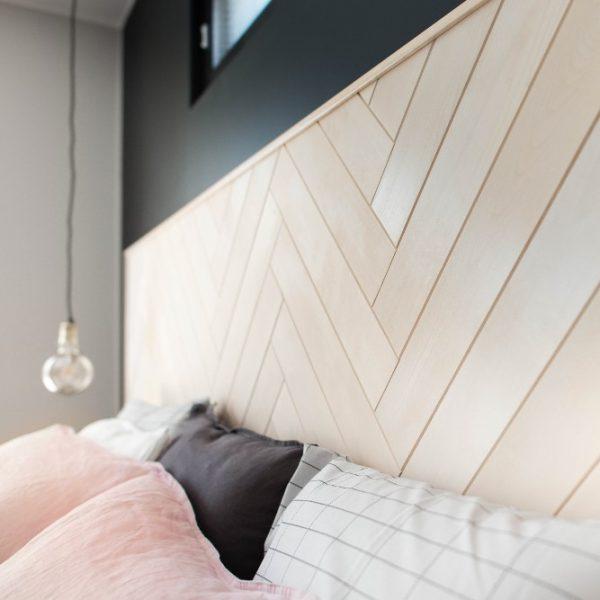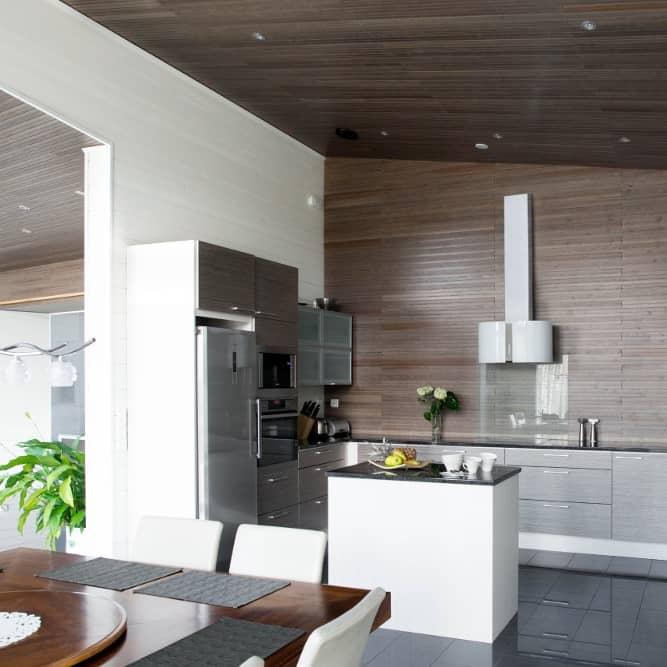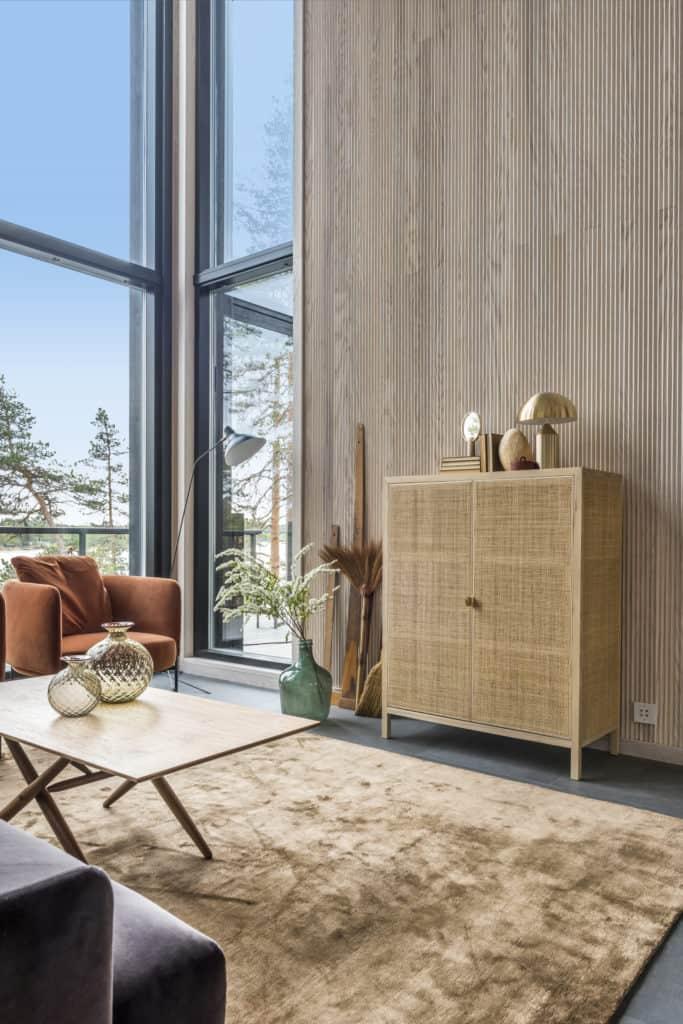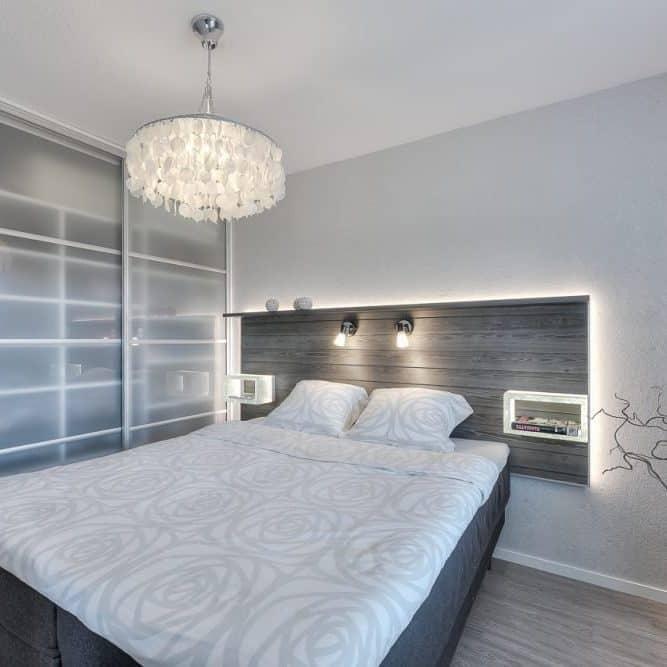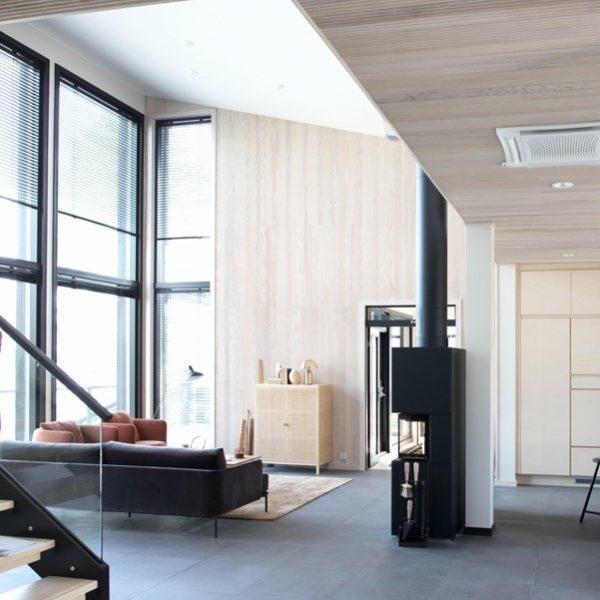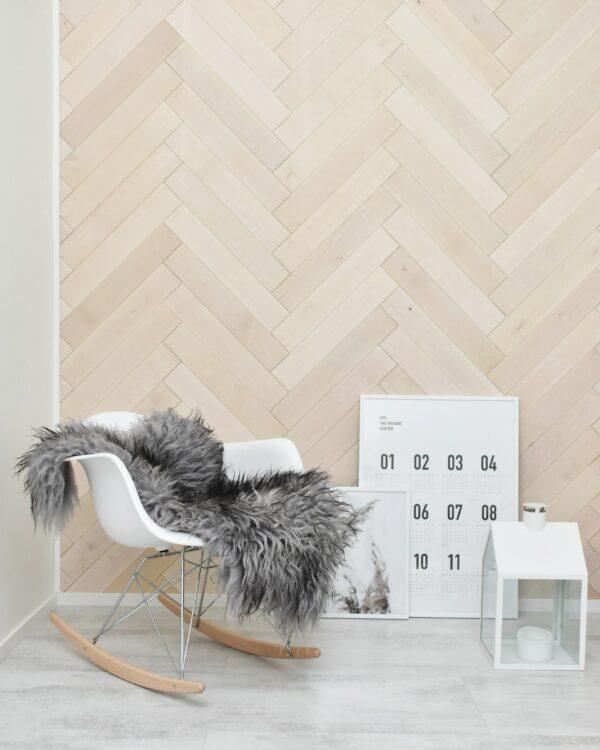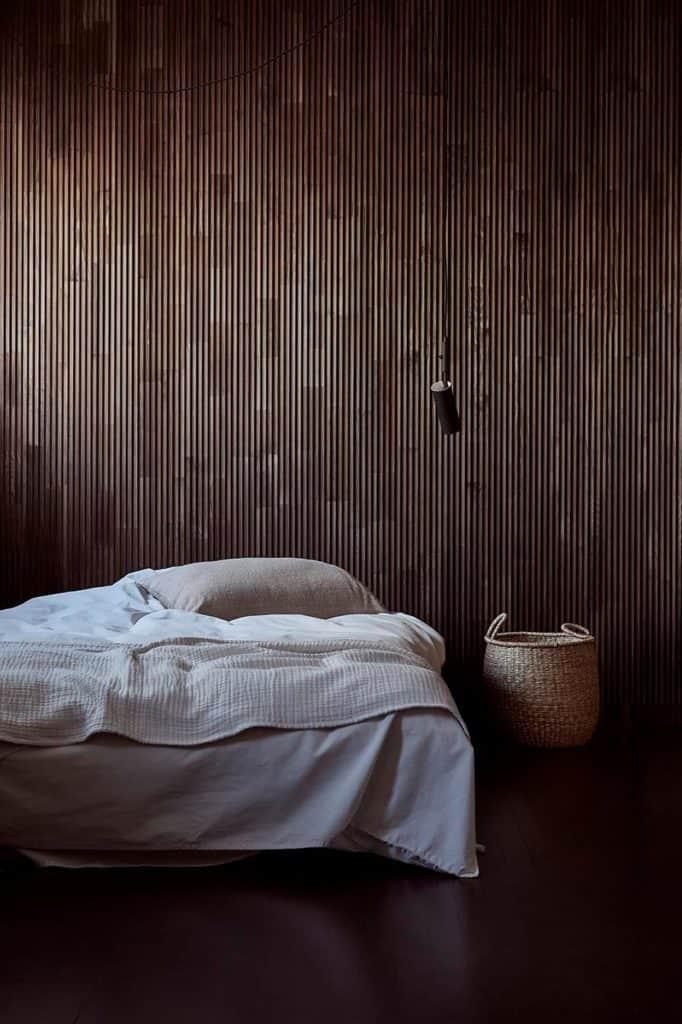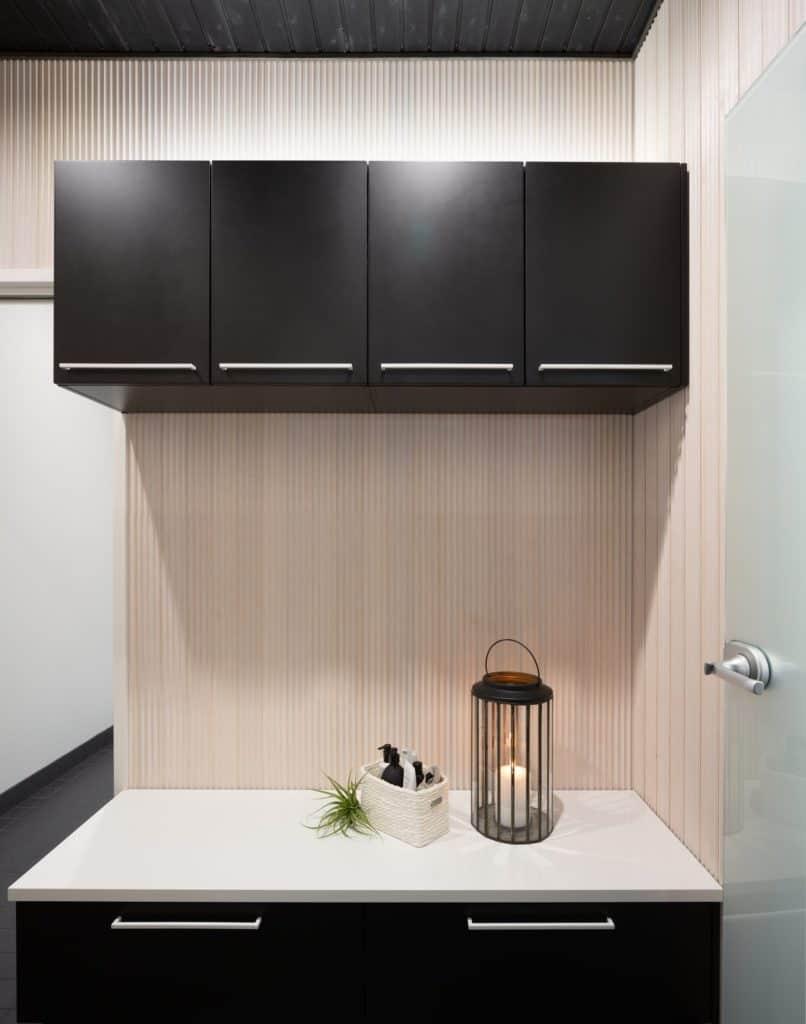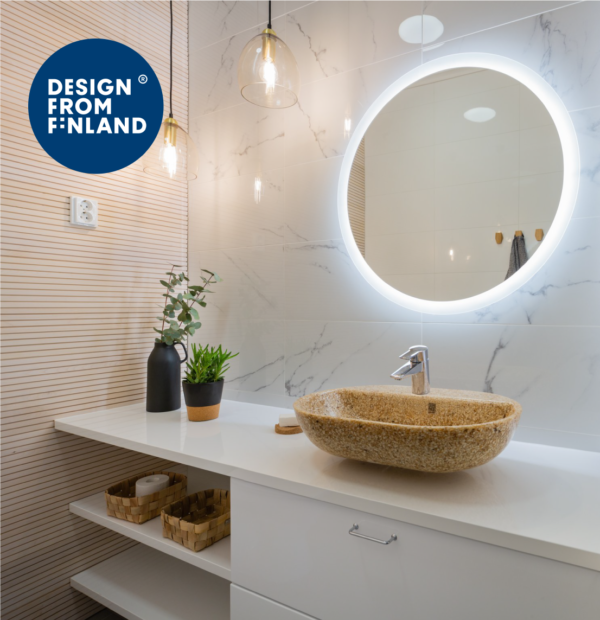Power walls have been a part of Finnish interior design for a long time, but in the 2020s, the style-conscious interior designer will make them ecologically from wood.
Wood is a warm and vibrant material for home interiors, which in the past was mainly seen in ceilings or saunas. In recent years, the use of wood has diversified, with real wood surfaces spreading into every room in the home.
Wood is an excellent surface material. Wood can be used particularly creatively in interior design as an effect. As wood is easy to work and wood panels are themselves ready-made interior solutions, the use of wood effects is relatively easy.
In this article, you will learn first and foremost how to create an effect wall using real wood.
6 reasons why you should use wood to create the effect wall you're designing
1. Wood supports your wellbeing
2. Fixing a panel is easier than wallpapering and tidier than painting
3. Ecological and beautiful wood is a mega-trend for interior design and construction in the 2020s
4. Wooden surfaces create a softer acoustic in a room than concrete, stone or plasterboard
5. Wooden construction is always a positive step towards sustainability
6. If you want to change the look of a room later, you can sand and refinish the wood panel.
Real wood is making a stronger impact in interior design solutions
The popularity of wood in Finnish interior design can be explained by three factors: natural beauty, proven health benefits and ecology.
In addition to its natural beauty, the uniqueness of wood as a decorative material therefore comes from its health benefits. Looking and touching wood reduces stress hormones, lowers blood pressure, increases feelings of pleasure and recharges your batteries. Your heart rate also lowers when there are lots of wooden surfaces and materials in the room.
Wood insulation also offers benefits in balancing indoor humidity by absorbing excess moisture and releasing it into the dry air. In the case of real wood, moisture absorption is by no means a harmful phenomenon; it is part of the material's inherent properties and should not be feared.
The style of an efficiency wall is determined by the colour of the panel, the profile and the orientation of the panelling
Wooden panels are available to suit every interior designer's needs. The colour, profile and direction of the panelling will be determined by the rest of your home and your own preferences. Do you prefer a wide horizontal panel, or are you more interested in narrow vertical paneling?
The three-dimensional VIRE panel designed by Ristomatti Ratia is asymmetrical in shape, with its undulating three-dimensional surface playing with shadows and changing shape depending on the viewing direction. The STRUKTUURI decorative panel is a good example of a wide panel that allows the natural patterns of the wood to come to the fore.
The typical installation orientation of panels is influenced by general trends - sometimes horizontal panels are preferred and sometimes vertical panels are installed. Vertical panels emphasise the height of the room, while horizontal panels emphasise the width. By playing around with the orientation, the atmosphere created by the effect wall can be changed. It is therefore advisable to choose the direction of the paneling on the effect wall according to the amount of light in the room.
How to create a finished and beautiful effect wall
- Choose a wood panel that is pre-finished
Pre-finished wood is a smart choice for interior design and quick to install. For example, the interior panel used in the sauna can be replicated on the wall of the washroom. This way you can continue the same colour scheme and give the tiles a warm contrast. You can also roll the panel used in the ceiling onto the wall by extending the ceiling panel without extensions on one wall surface of the room. - Choose a wood panel for your wall
When choosing panels for your wall, pay attention to the way the panel is attached. Concealed fixing is the neatest way to create a wooden effect wall, as the nail heads will not damage the beautiful wooden surface. Most of Siparila's interior panels are fixed with nails or hooks so that the fixing points remain hidden. An exception to the range is the PALA™ panel, which is attached with adhesive and allows you to create a variety of patterns, such as a stylishly simple brickwork or a warm herringbone pattern. - Pay attention to the direction and lighting of natural light
Wood reflects light beautifully, and the light it reflects does not dazzle, but makes the wood come alive. The reasons for the tree also come into their own in the light. The use of wood as an intensifier offers many possibilities, for example for indirect light. Panel surfaces work beautifully in indirect light, where light is directed from below or above to match the wall surface. So pay attention to the way the light appears in the room at different times of the day, and to the lighting in the room.
Power wall for the living room
The living room is the most central room in your home, as it is where you and your family are likely to spend most of your waking hours at home. Friends and acquaintances who visit you will also most often sit in the living room.
With a wooden effect wall, you can create the atmosphere you want in an important space.
The wooden surface of the effect wall soothes both the colour and the soundscape of the living room. When choosing the colour and texture of the wood panel, you should take into account the direction and amount of natural light already mentioned. A dark panel will naturally absorb more light than a light one. On the other hand, the three-dimensional, wavy surface of a VIRE panel, for example, will look different in the natural light coming from different directions at different times of the day.
If you're looking for a natural wood pattern and a slim profile for your living room accent wall, check out our JALO decorative panel made of ash. Thanks to a soft finish, the beautiful grain patterns of the wood are visible, adding nuance to a straight-lined panel. For the decorator who prefers a wide profile wood panel, one of our three shades of AAVA interior panels (Sandy Beach, Hanki and Kaamos) can provide the perfect effect wall material.
The wood tone of an effect wall can be easily reproduced in furniture legs, bookcases or coffee table material, for example. Even in the smallest details, the repeated wood tone ties the effect wall beautifully into the rest of the interior.
Power wall for the bedroom
The power wall in the bedroom is usually placed behind the bed. Wall surfaces play an important role in creating the interior design of a bedroom, as it is rare for a room to hold a lot of furniture or other decorative elements.
However, you spend a third of your life in your bedroom, so it's worth making sure it's comfortable. A good night's sleep (or, alternatively, a not-so-good night's sleep) will also be reflected in everything you do.
The softened acoustics of wooden surfaces not only soothe the soundscape in the bedroom, but the health benefits of wood are also particularly noticeable in the bedroom. When you choose a wood panel as the material for your effect wall, it will even out the humidity fluctuations in your bedroom. Wood has a natural ability to absorb excess humidity and release it, for example during the dry winter frost.
So a wooden effect wall in the bedroom is not only aesthetic, but also an act of well-being.
Power wall for the kitchen
Whether your kitchen has high-gloss or matt-finished fixtures, wood paneling can also be used as a kitchen accent wall. A particularly popular trend at the moment is to combine matt black furniture with natural wood tones.
The best way to get the best effect in the kitchen is not to hide it behind the cabinets. Do you have free wall space in your kitchen, for example around a dining table or refrigeration units?
With PALA™ interior panels, you can create beautiful herringbone patterns or graphic squares in a modern kitchen. For PALA™ interior panels, you'll also find a chipped corner strip in our range to frame an effect wall or a specific pattern neatly, easily and beautifully.
Power wall for toilet or bathroom
A toilet or bathroom is often a resonant and hard-surfaced room, so a wood panelled effect wall will provide a soft contrast to the tiled surfaces.
In particular, the wall behind the toilet seat is often left empty, as it has no particular role to play, for example in terms of storage space. Does the wall behind the toilet seat serve as an effect wall in your toilet?
If the toilet bowl is wood patterned, we recommend using the same wood colour for the wall panel. With these wood surfaces, you can also create a uniform line in the shades of, for example, the toilet storage baskets and towels.
For the bold decorator, black wood, such as STRUKTUURI or VIRE, can be combined with white toilet furniture. The combination of different natural wood tones is also gaining popularity in the early 2020s. You can find audible wood tones in our range of KOO, PALA™, STRUKTUURI and VIRE interior panels, among others.
Start designing your wooden power wall!
Do you already know what kind of wooden effect wall is right for your home?
Here's a checklist to help you plan:
Which colour of wood panel is best for your home? Look at the colours of the floor, ceiling, window sills, furniture, etc.
Do you prefer a narrow or wide profile panel?
Does vertical or horizontal paneling feel more natural in your home?
Which direction does natural and artificial light enter the effect wall from, affecting the colour of the panel or the direction of the paneling?
All our different interior panels can be found here.
If you have any questions about interior panels, please contact us. We are woodworking professionals and work with dozens of interior designers and architects!
Download the trend report and the interior design catalogue. You'll find comprehensive information about today's interior design trends in both of them!
